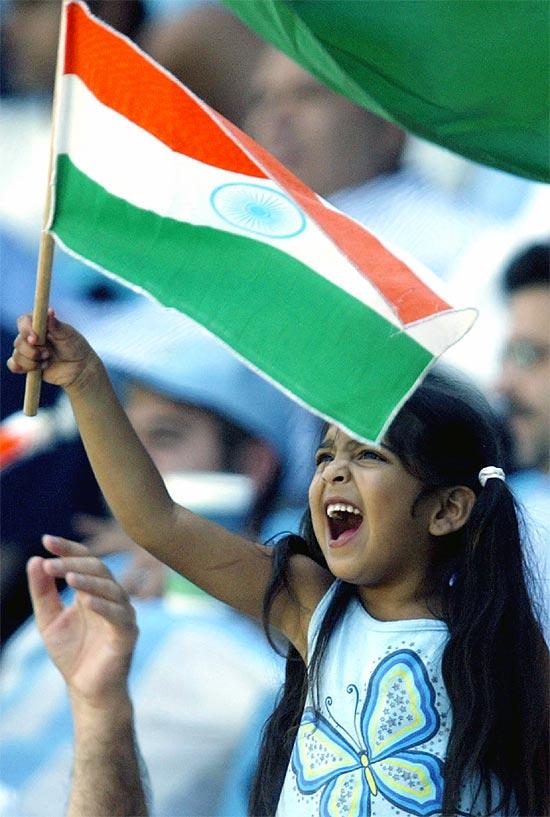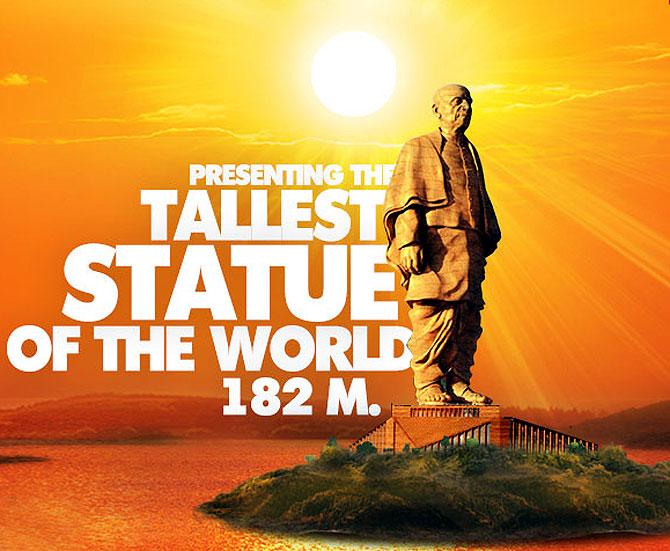
Imagine the possibilities if India had unleashed entrepreneurship way back in 1947 and not in 1991. A whole generation of entrepreneurs was lost to the licence raj, says Bhupesh Bhandari.
Narendra Modi's recent observation that India's fate would have been different had Sardar Patel been the country's first prime minister, instead of Jawaharlal Nehru, has caused a stampede of public opinion.
Differences between the two leaders were insignificant, some have said, and these actually proved healthy for the nascent democracy. Others have said that Mr Modi has been able to lay claim to Patel only because the Congress is a party of sycophants and no leader outside the first family can lay claim to greatness.
Still others have said that Mr Modi cannot be Patel's political heir because of his hardline attitude towards the minorities. But Mr Modi's poser remains unanswered.
Click NEXT to read more…

"What if" questions are always tricky to answer. But one thing is for sure: unlike Nehru, Patel did not view businessmen with suspicion.
Maybe if he were prime minister, India wouldn't have gone down the socialist path that put shackles on business.
Maybe because of that, we would have done better than the Hindu rate of growth. Imagine the possibilities if India had unleashed entrepreneurship way back in 1947 and not in 1991.
South Korea and India were at similar levels of development in 1947 when they gained independence; look at the difference between the two now. A whole generation of entrepreneurs was lost to the licence raj.
Click NEXT to read more…

Nehru's dalliances with socialism started in the early 1930s. The West was in the grip of the Great Depression, while Soviet Russia was rapidly industrialising under successive five-year plans.
This left a great impression on his mind. In his presidential address to the Lucknow session of the Congress in April 1936, Nehru advocated socialism: the end of private property and the profit system.
This prompted 21 "mercantile leaders" of Bombay to publish a manifesto against Nehru in The Times of India and The Tribune on May 20. According to business historian Gita Piramal, seven of these were Tata men - though J R D Tata was not among them - which suggested that the business group had played a big role in the manifesto. One of the other signatories was shipping magnate Walchand Hirachand, who felt Nehru would use his position as Congress president to propagate his ideas and sideline "sensible" men like Patel.
Click NEXT to read more…

Patel was never hostile towards business and recognised its vital role in the economy. He was particularly close to Ghanshyamdas Birla.
The two would go for walks together whenever they were in the same city and would also frequently lunch together. Nehru, on the other hand, thought Birla supported the Hindu lobby within the Congress.
Agnostic to the core, Nehru found no place for religion in public life. Birla, on the other hand, found Nehru's sympathies for the Soviet Union and his socialist bent of mind a bit too much to handle. In 1936, Birla wrote to Mahatma Gandhi: "In London, Nehru was making speeches that Russia was India's best friend and Japan a weakening power. I don't know about Russia, but I definitely know that Japan is not a weakening power."
Click NEXT to read more…

Did Patel's closeness to Birla bother Nehru? "Pundit-ji [Nehru] felt we were Patel-ji's men, with the result that Pundit-ji didn't look upon us with great warmth," Ms Piramal quotes Basant Kumar, Birla's son, in her book, Business Legends.
She suggests that Birla may have met Nehru after Patel's death, in 1950, to explain that though Birla and Patel were close, there was never any intention to cause Nehru hurt.
Those who dismiss the differences between the two leaders as "academic" or "creative" would do well to read the book. In September 1947, Patel insisted Gandhi should stay in Birla House in New Delhi in view of the growing threat to his life.
After Gandhi was assassinated on January 30, 1948, by a Hindu fanatic in the lawns of Birla House, Nehru wanted the house to become a national monument. Birla wasn't keen because of his close association with Gandhi.
Click NEXT to read more…

Patel joined the fight on Birla's side. He wrote to Nehru from Mussoorie, where he happened to be staying with the industrialist, saying that the "public clamour [for a museum] would not have attained these dimensions if we had been bold enough [do you sense a dig here at Nehru?] to give a correct lead by making known our own opinion publicly to the people".
Gandhi, Patel said, wouldn't have liked the idea of having a museum named after him. The museum, he added, "involves violence of the worst kind to the feelings of both Ghanshyamdas and Bapu".
If he still insisted on taking over Birla House, Patel suggested, Nehru should make available to Birla an alternative site in Delhi to build a house for which he would adequately compensate the government. Nehru rushed to Mussoorie to placate Birla and Patel. In 1971, Birla House finally became government property.
Click NEXT to read more…

The relationship between leaders and businessmen is unidimensional - it's driven by the principle of mutual benefit. And businessmen are practical (and also often unscrupulous) people.
That's why they never get into open confrontation with leaders. That Lala Shri Ram of Delhi Cloth Mills dared to take on Patel (before Independence) shows that businessmen did not see him as vindictive.
In 1931, Patel, who was raising funds for the Congress, had sent Bhulabhai Desai to Lala Shri Ram for his contribution. Lala Shri Ram readily agreed to the request and paid Rs 10,000. Patel was not happy with the amount.
He conveyed through Desai that a higher payment would be less expensive than a strike in the DCM mills. Lala Shri Ram was infuriated and told Desai that he wouldn't budge under any threat.
Patel realised that Lala Shri Ram could not be bullied. The two reconciled. Patel became a regular visitor to Lala Shri Ram's house in New Delhi.